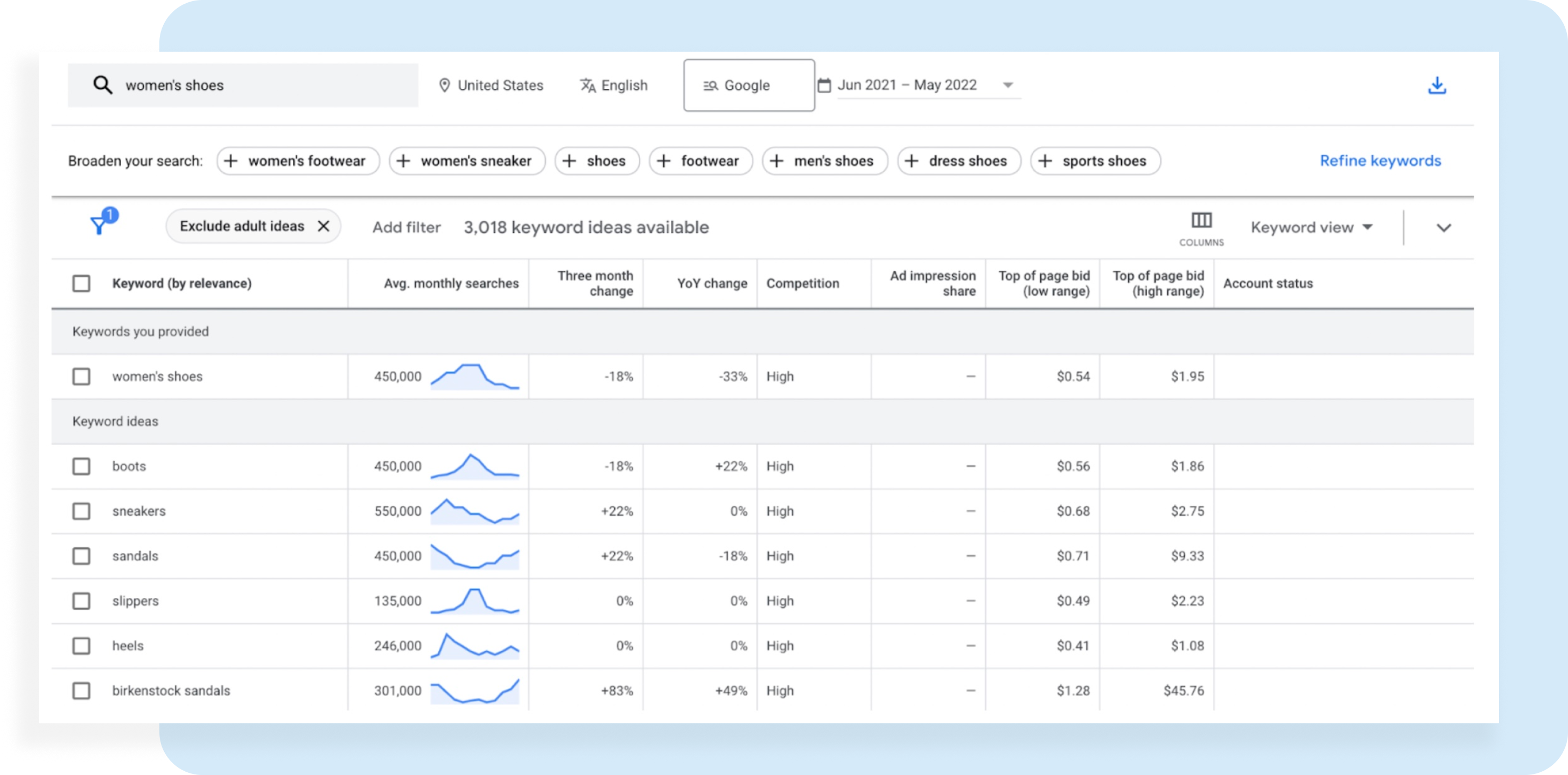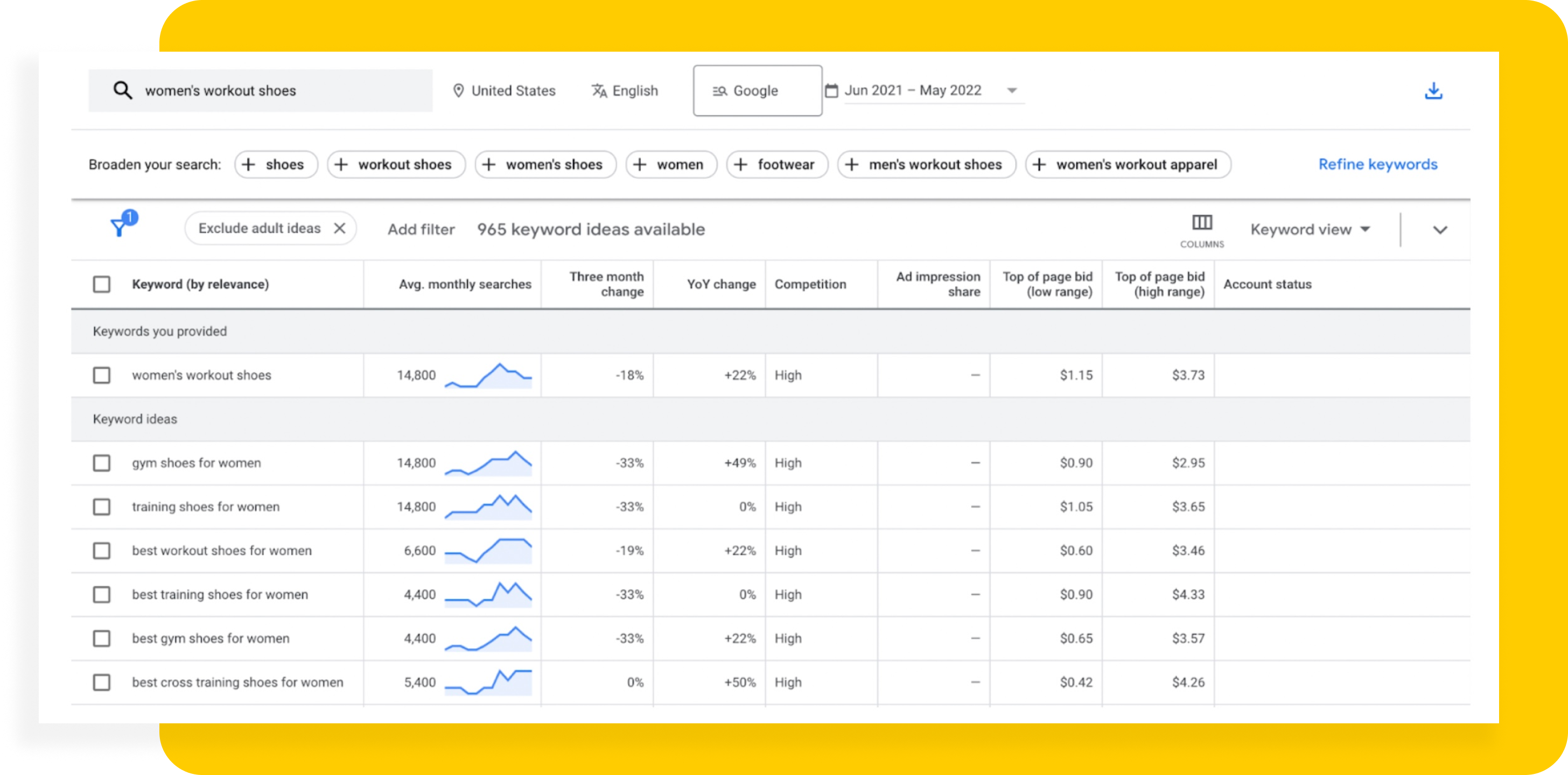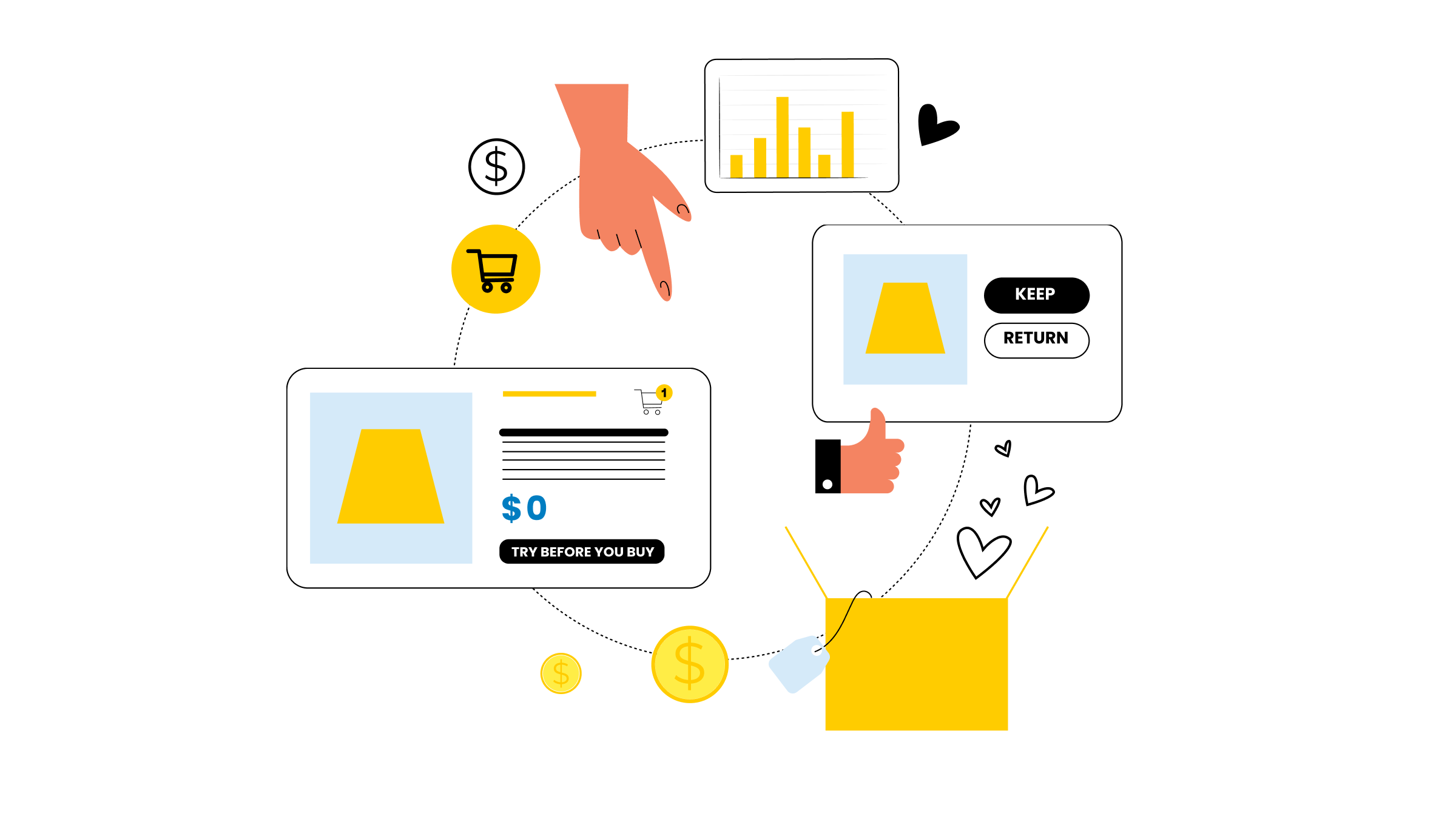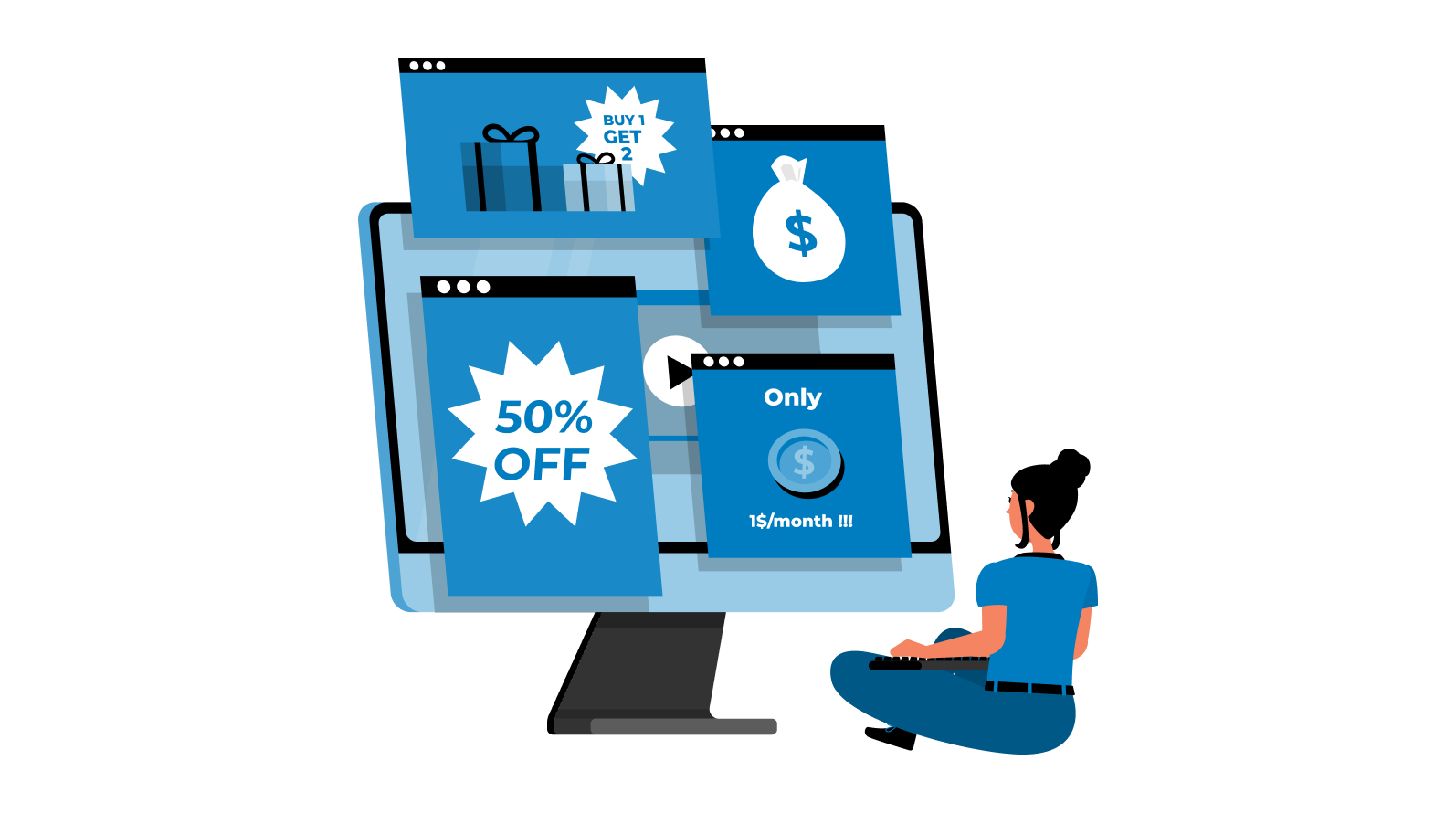6 Ways to Increase Your Return On Ad Spend (ROAS)
Recomended articles:
Return on Ad Spend (ROAS) is an important metric when it comes to evaluating whether or not you’re spending your advertising dollars wisely. It helps measure the amount of revenue earned for every dollar spent on ads. While a low ROAS could indicate some red flags in your campaign, the good news is that they’re usually easy to address. The key to optimizing it is in any of the following ways:
- Lowering your costs
- Increasing your conversion rate
- Increasing your average order value
 Your optimal ROAS will depend on several factors, but a good benchmark to aim for is 4:1 - $4 earned in revenue for every $1 spent. We’ve lined up 6 actionable steps you can take pretty much instantly to address the key areas of focus and help you get the most bang for your buck.
Your optimal ROAS will depend on several factors, but a good benchmark to aim for is 4:1 - $4 earned in revenue for every $1 spent. We’ve lined up 6 actionable steps you can take pretty much instantly to address the key areas of focus and help you get the most bang for your buck.
1) Improve your targeting.
This applies to both your audience and your keywords:
Audience.
In order for your targeted ads to be profitable, you want to be clear on which exact audience you’re trying to reach. These will be the shoppers who are most likely to purchase from your brand. You can configure your ads based on general demographic information such as location, age, and gender, as well as more specific inputs such as interests, behaviours, and pain points.
You can download our free customer persona template to create the different types of audiences that you want to hyper-target. Typically, it’s best to develop separate ad sets specific to each segment. This will increase the likelihood of conversions.
Keywords.
It’s important to also refine your keywords and make sure you’re targeting the right ones. Keyword research is essential in creating your ads; you can use tools such as Google Keyword Planner or Wordstream to see what your audience is searching for. You then want to target these exact keywords across your ads. You can also target different ones within different ad sets to see which perform the best. Right audience + right keywords = a match made in ROAS heaven.
Just like your audience targeting, keywords should be quite specific. For instance, a Google Keyword search for “women’s shoes” would get you some pretty generic results. Refining it to “women’s workout shoes” gets you more specific keywords and will better help inform which ones to target.
Keyword search: “women’s shoes”

Keyword search: “women’s workout shoes”
2) Create a kickass landing page.
Once you successfully reach the right audience with the right keywords, how do you get them to convert? Higher conversions mean higher revenues and better ROAS. Here are a few landing page best practices to help get you there:
- Customize the landing page to the audience you’re targeting: Choose 1-2 of the top segments you identified earlier, and leverage their unique preferences in the landing page. For example, if a common pain point you are targeting is inconsistent fit with pants, make sure it’s the first thing being addressed on your page.
- Optimize your page for speed: If your landing page doesn’t load fast enough, not only are you killing your bounce rate but it may also damage any SEO you’ve worked to build. Optimize your page for both desktop and mobile users to make sure you’re not losing any shoppers throughout their journey.
- Design + copy components: Your design should be user-friendly and easy to follow, and your copy should be persuasive and straightforward. Use strong messaging that communicates your benefits - a good value prop can get you far. We’ll elaborate more on this in our next point.
If you don’t have a landing page and are starting from scratch, you can reference this resource for a step-by-step guide on where to begin.
3) Get clear on your value proposition.
Your value proposition should clearly communicate why your shopper needs to buy from you. A strong enough statement can make all the difference in whether or not a customer takes action and converts. Many brands take advantage of new trends and technologies in the marketplace to communicate the unique benefit they provide to their shoppers.
An example of this is the recent Try Before You Buy trend. TBYB is essentially eCommerce software that helps replicate the in-store shopping experience, online. Shoppers go nuts for this because it allows them to try things on at home, with no upfront payment. They only pay for what they ultimately decide to keep.
Blackcart-powered merchants have recently found that leveraging Try Before You Buy has helped them increase their ROAS in a couple of ways:
- A strong value prop in their messaging that gets customers to click on ads to learn more. Nothing draws shoppers in more than seeing that they can try something for free. One merchant in particular found that retargeting and acquisition ads that promote TBYB have a 30% higher conversion rate than non-TBYB ads.
- TBYB increases Average Order Value (AOV) by 51%. This usually occurs because the risk and uncertainty often associated with online shopping is removed. Shoppers feel more confident in filling their carts, and when they try more, they keep more. Increasing your AOV is one of the strongest ways you can generate more revenue from your ads.
If you’re interested in learning more about Blackcart-powered merchants, you can check out some case studies here.
4) Lower your ad spend.
Your value proposition should clearly communicate why your shopper needs to buy from you.
Lowering your ad spend sounds like a no-brainer - if done correctly. The important distinction is that we don’t mean you have to cut back on advertising, but rather, use your advertising dollars more effectively. Below are a few ways you can achieve this, particularly when it comes to your Google Ads:
Negative keywords
Just like how there are keywords you want to target, there are also some you want to avoid - the ones that are least relevant to your business. You can filter these out by adding them to your campaign as negative keywords. This way, your ad dollars are only going towards the keywords that actually matter to your shoppers.
Improve quality score
Your Quality Score measures how relevant your ads are to the keywords that you’re targeting. You can use Google’s Quality Score tool to check this - a higher score means better ranking and lower cost.
Compare bidding strategies
Different bidding strategies exist and odds are one will be more cost-effective for your campaign than the other. This is usually a trial-and-error process, but experiment with both manual and automated bidding to see which option is more optimal for your advertising goals. You can read more about bidding strategies here.
5) Consider retargeting campaigns.
Getting customers to convert upon seeing an ad is the main goal of advertising. The logic behind retargeting campaigns is that the audience most likely to convert is the one that is already familiar with your business. These are your social media followers, email subscribers, past web visitors, etc. Retargeting them across different channels may help draw them in as well as keep your business top-of-mind.
A disclaimer: warm traffic vs cold traffic can make a huge difference - warm leads are naturally more open to your products. Multiple touchpoints ensure you stay relevant to them. But just like with anything else, it’s best not to overdo it. You may run the risk of ad fatigue and your audience might start tuning out the advertisements altogether.
If you want to learn more about retargeting campaigns, check out this article that found that consumers are 70% more likely to convert with retargeting.
6) Evaluate and reevaluate.
Ads aren’t a perfect science, but with the right strategy, you can get pretty close.
You’ll likely be making revisions to your ads when it comes to things like messaging, format, and channel. Fine-tune the different elements to create an optimized campaign. This is an ongoing process; you’ll ideally modify your strategies on a consistent basis to keep up with marketplace changes.
A/B testing is often done with ads to get a quick understanding of what performs best. With A/B testing, you’re experiencing with variables such as design, copy, placement, call-to-action, etc. Regardless of what you choose, test one variable at a time to get an accurate picture of what is or isn’t working.
…
If you need help with your conversions and AOV, schedule a demo with a Blackcart team member and see how Try Before You Buy can play a part in increased ROAS. Get in touch with us here.






